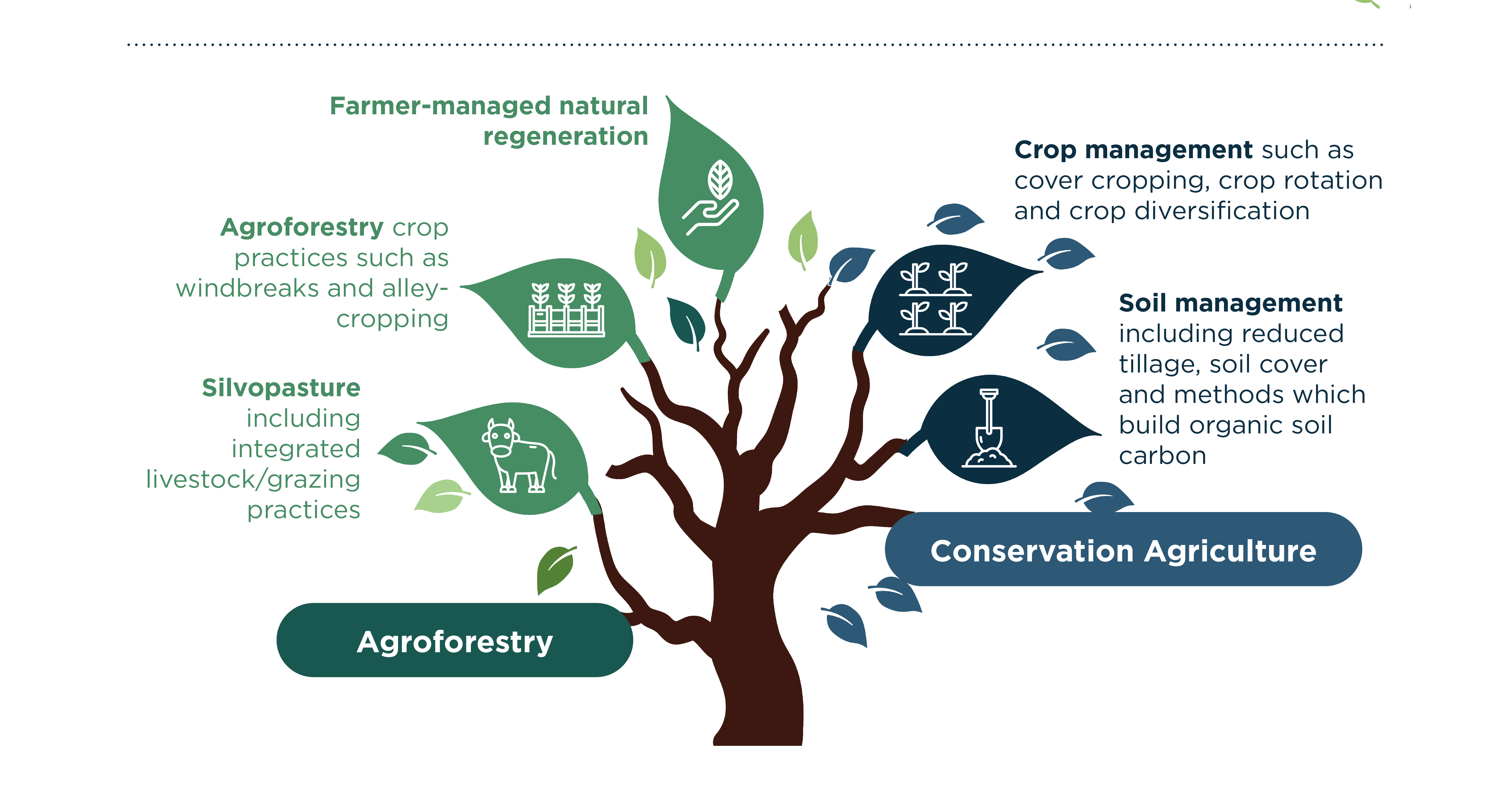Restore by use
Context
- The Green Revolution of the1960s pulled India from the brink of starvation, and turned it into a big food exporter, but the revolution also made India the world’s biggest extractor of groundwater. In recent times, regenerative agriculture can help solve the water crisis.
Regenerative Agriculture
- Regenerative agriculture is a system of farming principles and practices that seeks to rehabilitate farm ecosystem by placing a heavy premium on soil health, biodiversity improvement, water and air quality.
- It includes practices like use of natural inputs, minimum-till, mulching, multicropping and sowing of diverse and native varieties.
Principles
- Regenerative agriculture adheres to the following principles:
- Minimize soil distribution through conservation tillage;
- Diversify crops to replenish nutrients;
- Retain soil cover using cover crops;
- Integrate livestock, which adds manure to the soil and serves as a source of carbon sinks.
Types of Regenerative Agriculture

Findings
- The “State of Bio Fertilizers and Organic Fertilizers in India”, reveals severe and widespread deficiency of organic carbon and micronutrients in Indian soils.
- Studies have established that 1 per cent increase in soil organic matter per 0.4 ha increases water storage potential by more than 75,000 litres.
- Trials of regenerative agriculture in Madhya Pradesh and Maharashtra have saved 14.5 billion litres of water.
Role of civil society organisations
- Rythu Sadhikara Samstha, a non-profit set up by the Andhra Pradesh government aims to promote zero-budget natural farming against by using inputs made from crop residue, cow dung , urine, fruits, etc to improve crop productivity and soil fertility.
- Samaj Pragati Sahyog in Madhya Pradesh promotes sustainable agricultural practices like changing crop systems, soil fertility interventions and micro-irrigation technologies, composting and recycling of crop residues, etc
Significance
- Regenerative farming can reduce emissions from agriculture and convert croplands and pastures, into carbon sinks.
- It improves crop yield and promotes the growth of nutrient rich crops.
- It facilitates soil aggregation and nutrient cycling.
- Other benefits of regenerative agriculture include more efficient water use and fewer pests.
Conclusion
- Indeed, Regenerative agriculture practices increase soil biodiversity and organic matter, leading to more resilient soils that can better withstand climate change impacts like flooding and drought.
reference:
https://regenerationinternational.org/why-regenerative-agriculture/
Subscribe
Login
0 Comments
